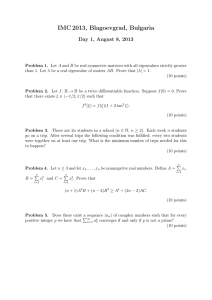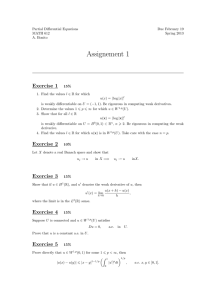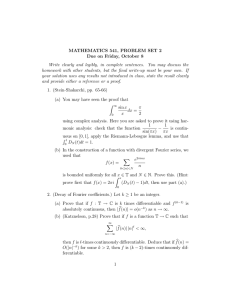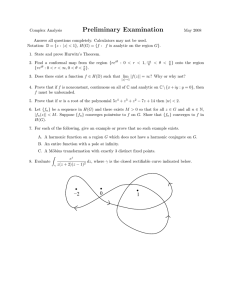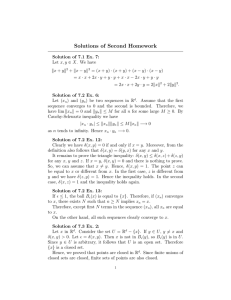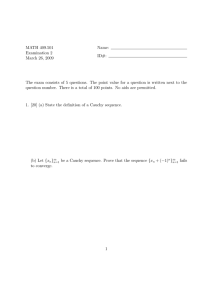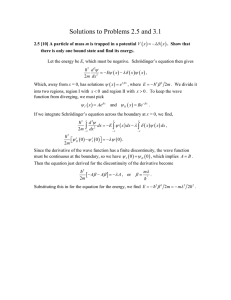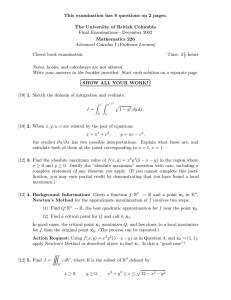Fall 2007 Applied Qualifying Exam Part I
advertisement
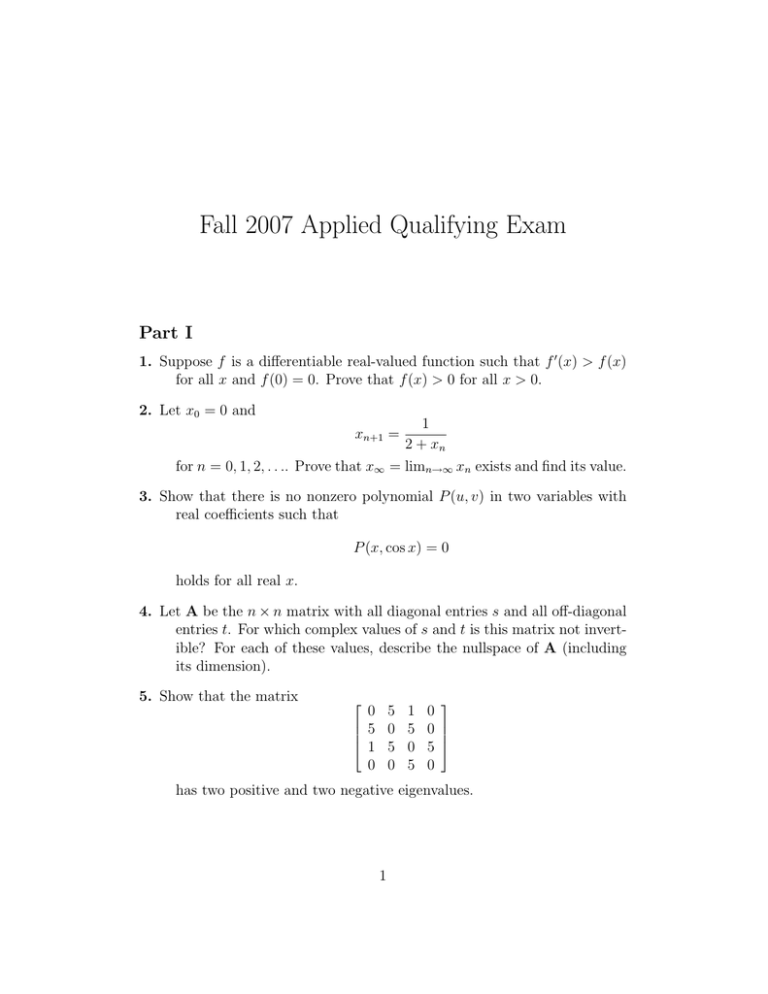
Fall 2007 Applied Qualifying Exam Part I 1. Suppose f is a differentiable real-valued function such that f 0 (x) > f (x) for all x and f (0) = 0. Prove that f (x) > 0 for all x > 0. 2. Let x0 = 0 and 1 2 + xn = limn→∞ xn exists and find its value. xn+1 = for n = 0, 1, 2, . . .. Prove that x∞ 3. Show that there is no nonzero polynomial P (u, v) in two variables with real coefficients such that P (x, cos x) = 0 holds for all real x. 4. Let A be the n × n matrix with all diagonal entries s and all off-diagonal entries t. For which complex values of s and t is this matrix not invertible? For each of these values, describe the nullspace of A (including its dimension). 5. Show that the matrix 0 5 1 0 5 0 5 0 1 5 0 5 0 0 5 0 has two positive and two negative eigenvalues. 1 6. Given an inner product (x, y) for vectors x and y over the field of real numbers, prove the Cauchy-Schwartz inequality |(x, y)| ≤ |x||y| for all x and y. Hint: consider |x + ty|2 for real t. Using the above inequality, prove the triangle inequality |x + y| ≤ |x| + |y|. 2 Fall 2007 Applied Qualifying Exam Part II 1. Evaluate Z ∞ sin 3xdx . + 2x + 3 −∞ x2 2. Let f be analytic in the disk |z| < R where |f (z)| < M . Find a bound for |f 0 (reiθ )| in terms of R, M and r < R. 3. Consider the function f (z) = (z 4 − 9)1/4 . √ Define a branch that is analytic for all |z| < 3 and that has the value f (0) = 91/4 eiπ/4 . Sketch your branch cuts. For the branch you have chosen, calculate f (i). 4. Consider the differential equation 2xy 00 + y 0 + x2 y = 0 Find two linearly independent Frobenius series solutions to this equation, i.e. solutions in the form y(x) = xr ∞ X an x n n=0 where r and the an are to be determined. It is sufficient to find the first three nonzero terms in each series. What kind of initial conditions at x = 0 are appropriate to determine a solution for x > 0? 5. The function T (x, y) satisfies the equation Txx + Tyy = 0 3 in the semi-infinite strip x ≥ 0 and 0 ≤ y ≤ 1 with the boundary conditions: T (x, y) → 0 as x → ∞ Ty = 0 on y = 0 and y = 1 for all x T (0, y) = y for 0 < y < 1 Find a series solution to this problem. Hint: begin by seeking separable solutions. Discuss briefly the behaviour of the solution near the origin. Is the solution continuous there? Differentiable? 6. A population model evolves according to the map xn+1 = f (xn ) = xn er(1−xn ) with real parameter r > 0. Find the fixed points and their stability. Show that a bifurcation occurs at r = 2. What kind of bifurcation is it? Sketch the graph of the map for r > 1 and describe the dynamics qualitatively. 4

